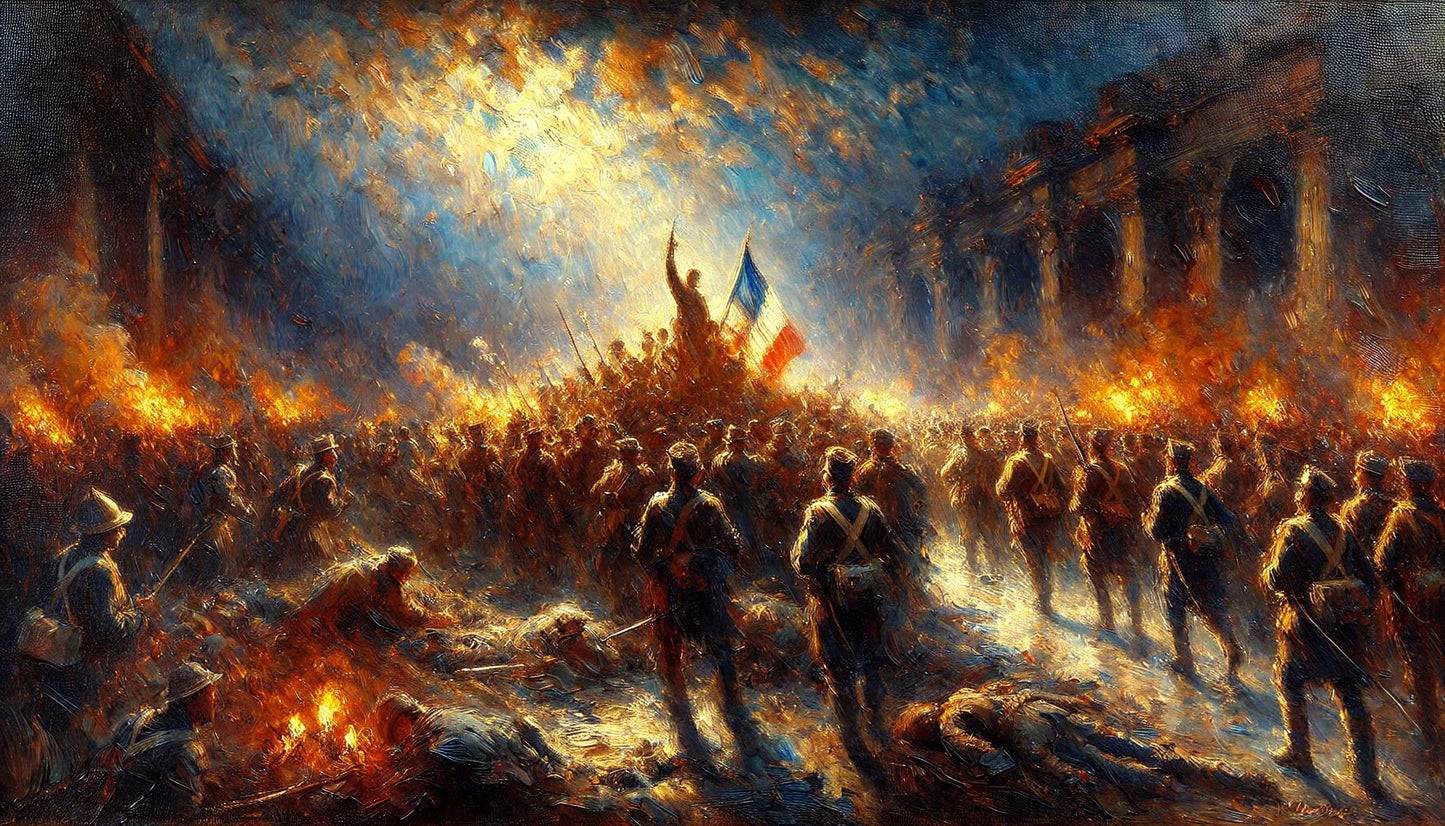The Glow of Victory – Shadows of Triumph
The Glow of Victory – Shadows of Triumph
Impresjonizm
Historia i wojna
Lead time
Lead time
⏳ Delivery time
The order processing time depends on: the production technique, the drying time of the paints, the size of the image and any hand-finishing and protection.
🖼️ Art print on canvas
-
High quality canvas printing :
- Canvas - synthetic canvas 260 g
- Natural Canvas - 260 g cotton canvas
- Stretching the canvas onto the frame
- Quality control and packaging
Total completion time:
🎨 Oil Giclée Reproduction (print + hand-finished)
-
Giclée print on canvas:
- Canvas premium - natural cotton canvas 360 g
- Pigment print drying
- Hand finishing: texturing and oil painting
- Paint drying (depending on layer thickness, medium type and format)
- Stretching the canvas onto the frame
- Quality control and packaging
Total completion time: –
🚚 Ready-made paintings – shipped within 24 hours
Our gallery has a special category called "Ready-Made Paintings" - these are works available immediately, already stretched on a frame or in a ready-made frame.
- They are 100% ready for immediate shipment
- Safe packaging in a reinforced cardboard box
Shipping takes place within: from the date of booking the order.
Image format: Reprodukcja Oil Giclée
Need a different size? Contact us.
Couldn't load pickup availability
1. Title
"The Glow of Victory – Shadows of Triumph"
2. Description of the image
"The Radiance of Victory – Shadows of Triumph" is an impressionistic story of the moment when war gives way to light – not a triumphant clamor, but a fleeting, almost tender flash of victory. Figures immersed in the half-shadows of a shimmering landscape are depicted in gestures of exhaustion, relief, and amazement. The pennants flutter no longer with the force of battle, but with the rhythm of the surviving soldiers' breathing. This is a scene not so much of a great victory as of a conscious one – where the glow is not the effect of fireworks, but the sun illuminating the field where combat had been raging moments before. The painting is more emotional than narrative.
3. Technology
Oil on canvas, executed with impasto and short, dynamic brushstrokes that build the composition's rhythm, the structure of light and matter. Glazes and broad, soft color transitions envelop the figures and background, lending the whole an air of ephemerality. Each brushstroke feels like a moment that is already passing—yet lingers in the memory.
4. Style
Historical Impressionism – a style that combines the emotional intensity of impressions with the weight of historical narrative. The painting does not reconstruct, but evokes atmosphere – the memory of a moment rather than its precise form. A style that approaches the viewer through light and shadow, not through words.
5. Colors
Muted blues and grays mingle with golden light, ochre reflections, and warm reds. The colors don't create dramatic contrasts—they create emotional ones. The radiance doesn't overwhelm—it envelops. These are the colors of memories: not literal, but real.
6. Invoice
The painterly texture is vivid and tangible—in places dense and convex, where light reflects as if on metal armor, and in others blurred, almost transparent—like a shadow moving across the wall of memory. The impasto acts here like a pulse, highlighting what was meant to be remembered. Glazing, in turn, diffuses the emotions.
7. Inspiration
Inspiration comes from the work of Claude Monet , whose approach to light was not to paint it, but to feel it . From Joaquín Sorolla, the painting draws an atmosphere of luminosity and a story encapsulated in a flash. But also from Edvard Munch , whose light and shadow are always an emotion, never a backdrop. The historical presence spiritually harks back to Jan Matejko , but is filtered through personal reflection, not monumentality. It also echoes contemporary painters creating reflective reinterpretations of battles—those in which brilliance symbolizes humanity, not military triumph.
8. Message and multidimensionality of interpretation
The film speaks to the idea that victory isn't just a moment of glory—it's often a moment of relief, fatigue, and remembrance. It's a story about how light has the power not only to illuminate but also to heal . "The Light of Victory" is also a tribute to those moments that don't make it into textbooks but remain in our hearts: a hug, a look, the silence after a volley.
9. Originality and authenticity
The painting stands out for its courage to approach war not from the perspective of triumph, but from the perspective of emotion. It is a unique work because, instead of an epic tale, it offers us a moment of reflection. Authentic because it was created not from the need to depict a battle, but from the need to understand what happens afterward —in people, in memory, in light.
✨ Sometimes the greatest victory isn't winning. It's the light that remains. ✨
Share


